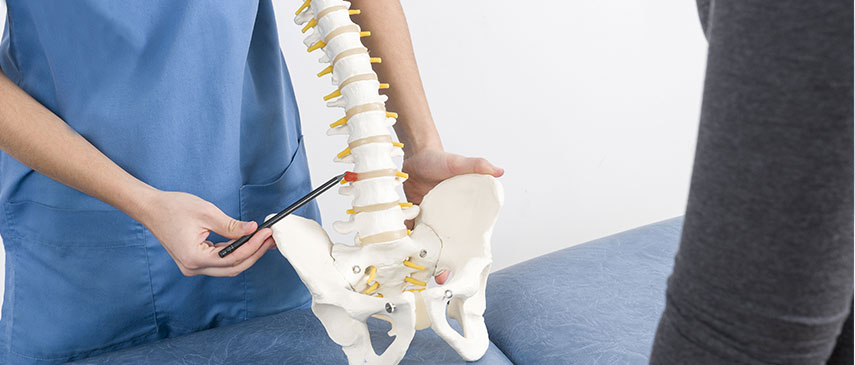One of the most common reasons people
Ask Our Physical Therapist: What Causes a Herniated Disc to Develop?
Spinal discs are soft and rubbery pads, designed to work as shock absorbers, located between the bony vertebrae that help make up the spinal column. Made of a thick outer ring of cartilage and an inner gel-like substance, spinal discs work to allow the back to bend with ease. Additionally, your spinal column helps protect delicate nerves and your spinal cord. If the cartilage in your spinal disc somehow tears or develops a defect, the gel-like substance or nucleus can break through. This bulging or herniation can then put pressure on the nerves, resulting in intense pain. In fact, even small amounts of pressure on your spinal nerves can cause weakness, numbness, and pain.
Herniated discs in the lower back can be particularly painful because they put pressure on the sciatic nerve, resulting in sciatica. The sciatic nerve is actually made up of several spinal nerve branches that travel from the spine and down into the leg. If the sciatic nerve becomes pinched, pain can radiate from the buttocks area, down throughout the back of the leg, and into the shin and foot. Luckily, physical therapy can work to reduce the pain caused by the condition.
When you are young, your spinal discs have a high water-content level, made up of almost 80 percent water. However, as you age, the water content in your spinal discs lowers. This causes the discs to become less pliable and increases the risk of tears or other defects. Some of the other common causes of herniated discs include:
- Excessive body weight or obesity
- Traumatic injury
- High-impact sports
- Repetitive twisting movements (workplace injuries)
- Heavy or incorrect lifting
Common Symptoms of a Herniated Disc
Symptoms associated with a herniated disc may vary depending on where the injured disc is located. Some of the most common symptoms you may experience include:
- Pain when bending or twisting
- Burning, numbness, or tingling in the back, buttock, legs, and/or feet.
- Weakness in the legs
- Pain that intensifies when sitting, coughing, sneezing, or bending
If you think you may have a herniated disc or other back pain issues, physical therapy can help. We recommend scheduling a consultation with our physical therapist as soon as possible.
How Can Physical Therapy Help Lower Back Pain?
Physical therapy is a safe and non-invasive pain treatment option designed to help patients of all ages heal from the inside out. By using targeted physical therapy treatments, our skilled physical therapist can work to relieve back pain and reduce inflammation, stimulate blood flow, and restore your range of motion.
Call one of our five Maine

